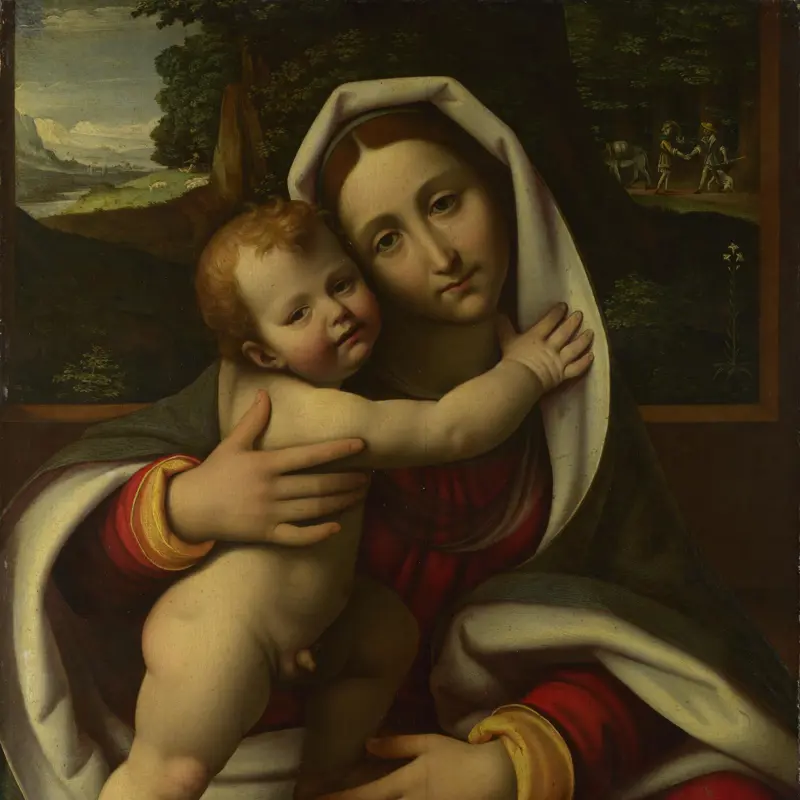Andrea Solario, 'A Man with a Pink', about 1495
About the work
Overview
A man carries a pink, or carnation, in his right hand. It was the custom for a bride to hide a pink in her clothes on her wedding day. Its presence here, along with the large blue and gold ring on the man’s left thumb, suggests that the portrait commemorates his marriage.
Solario was from Milan though he also worked in Venice. Although the man’s identity is unknown, his outfit tells us he was a Venetian of high rank. The cap and stole – the piece of fabric folded across his chest – signified maturity in Venice. His tunic suggests he may have been a magistrate, as only members of one of the city’s councils were permitted to wear red.
Venice in the 1490s was at the centre of innovations in portraiture thanks to the adoption of new techniques and ideas from contemporary Netherlandish painting. Solario has painted the man in the latest fashion using a three-quarter, rather than profile, pose set against the background of a green valley.
Key facts
Details
- Full title
- A Man with a Pink
- Artist
- Andrea Solario
- Artist dates
- about 1465 - 1524
- Date made
- about 1495
- Medium and support
- oil on wood
- Dimensions
- 49.5 × 38.5 cm
- Acquisition credit
- Bought, 1875
- Inventory number
- NG923
- Location
- Not on display
- Collection
- Main Collection
Provenance
Additional information
Text extracted from the ‘Provenance’ section of the catalogue entry in Martin Davies, ‘National Gallery Catalogues: The Earlier Italian Schools’, London 1986; for further information, see the full catalogue entry.
Exhibition history
-
2008Renaissance Faces: Van Eyck to TitianThe National Gallery (London)15 October 2008 - 18 January 2009
-
2021Remember meRijksmuseum Amsterdam30 September 2021 - 16 January 2022
-
2023Painted Love: Renaissance Marriage PortraitsHolburne Museum of Art26 May 2023 - 1 October 2023
-
2025La seduzione del colore: Andrea Solario e il Rinascimento tra Italia e FranciaMuseo Poldi Pezzoli26 March 2025 - 30 June 2025
Bibliography
-
1951Davies, Martin, National Gallery Catalogues: The Earlier Italian Schools, London 1951
-
1986Davies, Martin, National Gallery Catalogues: The Earlier Italian Schools, revised edn, London 1986
-
2001
C. Baker and T. Henry, The National Gallery: Complete Illustrated Catalogue, London 2001
About this record
If you know more about this work or have spotted an error, please contact us. Please note that exhibition histories are listed from 2009 onwards. Bibliographies may not be complete; more comprehensive information is available in the National Gallery Library.


